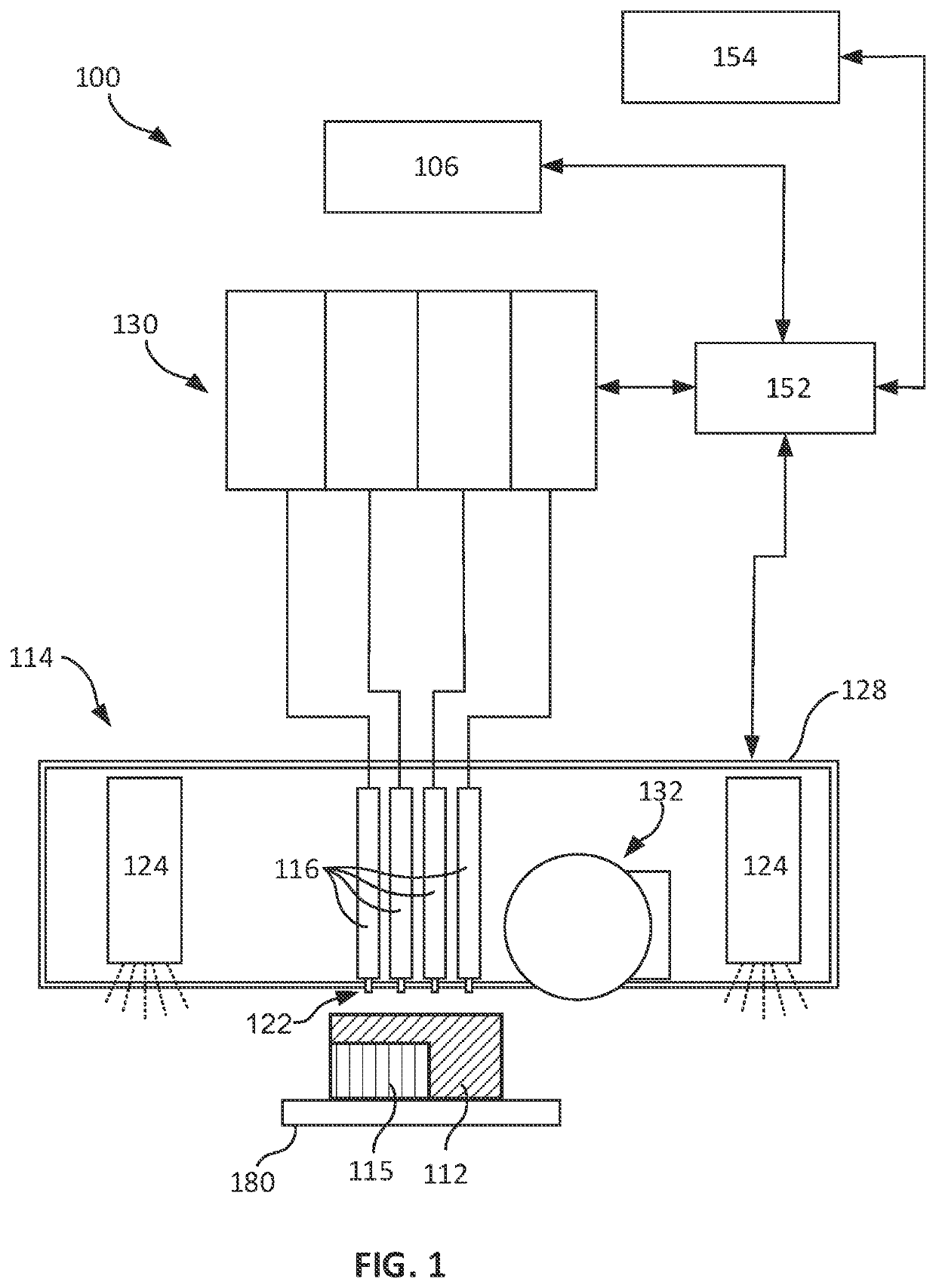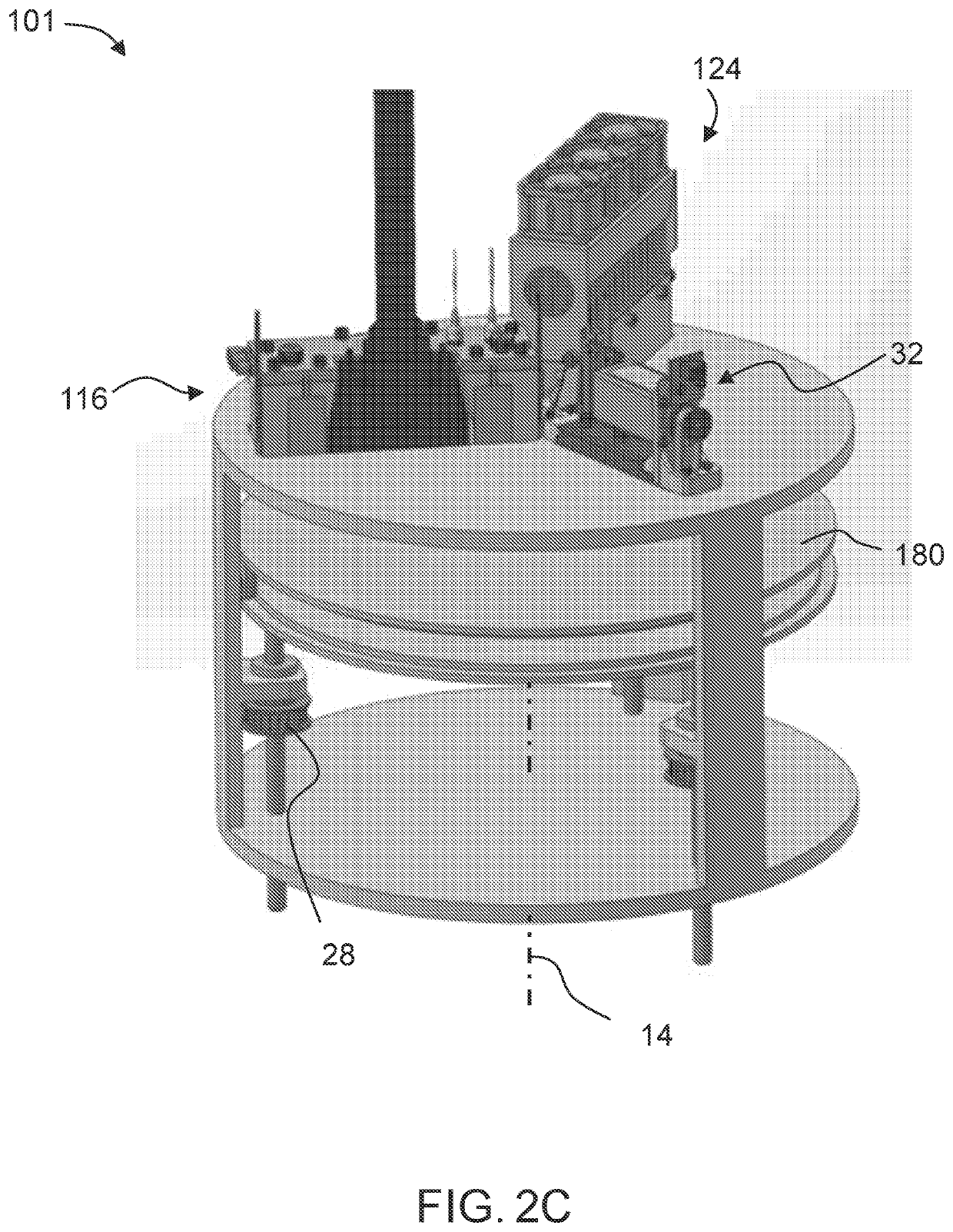Method for additive manufacturing with partial curing
a technology of additive manufacturing and curing, which is applied in the direction of additive manufacturing, manufacturing tools, additive manufacturing, etc., can solve the problems of curling and/or deformation of printed objects, non-optimal thermal stability of acrylic-based materials, and the majority of these materials are not compatible with the polyjetTM methodology
- Summary
- Abstract
- Description
- Claims
- Application Information
AI Technical Summary
Benefits of technology
Problems solved by technology
Method used
Image
Examples
example 1
Formulation Systems Comprising a Cyanate Ester Curable Material and an Acrylic Curable Material
[0511]An exemplary formulation system comprising a cyanate ester curable material (featuring high HDT, as defined herein) and an acrylic curable material (featuring high Tg, as defined herein) was used as the second building material formulation.
[0512]This formulation system generally includes two modeling material sub-formulations as follows: the sub-formulation A comprises acrylic UV-curable materials and an agent that promotes polymerization of a cyanate ester, and the sub-formulation B comprises a thermally curable cyanate ester and a photoinitiator that promotes curing of the acrylic materials.
[0513]Table 1A below presents the composition an exemplary sub-formulation A, and Table 1B below presents the composition of an exemplary sub-formulation B.
TABLE 1AComponentWt. %Aromatic amine-containing 5-10activator for CE curingDifunctional methacrylate65-75 (e.g., 70-75)monomer featuring Tg ...
example 2
Formulation Systems Comprising Acrylic Materials
[0523]An exemplary formulation system usable for printing objects in a D-ABS (core-shell) mode, as described, for example, in US Patent Application Pub. No. 2013 / 0040091 and in WO 2018 / 055522, which are incorporated by reference as if fully set forth herein, was first tested. The formulation system includes two acrylic based formulations: A first formulation that forms a reinforcer material featuring high HDT and a DLM material that forms a hardened material that features high Impact resistance and low HDT. In a core-shell D-ABS mode, the formed objects typically have a shell made of the DLM material and a core made of the reinforcer.
[0524]FIG. 12A shows curling bar models that were printed with a reinforcer formulation known as DR-83 (RGD 537) that has an HDT of about 140° C. when hardened and a shell made of RGD515 as the DLM material. The reinforcer formulation was a 100% reactive formulation, comprising 3-4 weight percents of a pho...
example 3
Transparent Formulation Systems
[0529]Transparent rectangular objects were printed using reactive VeroClear reference acrylic-based formulations, comprising 1.2 and 2 weight percents of a photoinitiator, and the same formulations when used in a core-shell configuration according to the present embodiments, wherein the first formulation is similar to the reference formulations and forms the outer region, and the second formulation comprises the same curable components and the same photoinitiator, the latter being in an amount of 0.5 and 0 weight percents. The obtained green bodies were subjected to curing by exposure to daylight lamp for 6 hours.
[0530]FIG. 14 presents photographs of the obtained objects, showing that objects printed according to embodiments of the present invention feature reduced undesired color and improved transparency. Left object was printed with the reference VeroClear formulation and the right object was printed according to the present embodiments, using VeroC...
PUM
| Property | Measurement | Unit |
|---|---|---|
| surface tension | aaaaa | aaaaa |
| surface tension | aaaaa | aaaaa |
| height | aaaaa | aaaaa |
Abstract
Description
Claims
Application Information
 Login to View More
Login to View More - R&D
- Intellectual Property
- Life Sciences
- Materials
- Tech Scout
- Unparalleled Data Quality
- Higher Quality Content
- 60% Fewer Hallucinations
Browse by: Latest US Patents, China's latest patents, Technical Efficacy Thesaurus, Application Domain, Technology Topic, Popular Technical Reports.
© 2025 PatSnap. All rights reserved.Legal|Privacy policy|Modern Slavery Act Transparency Statement|Sitemap|About US| Contact US: help@patsnap.com



